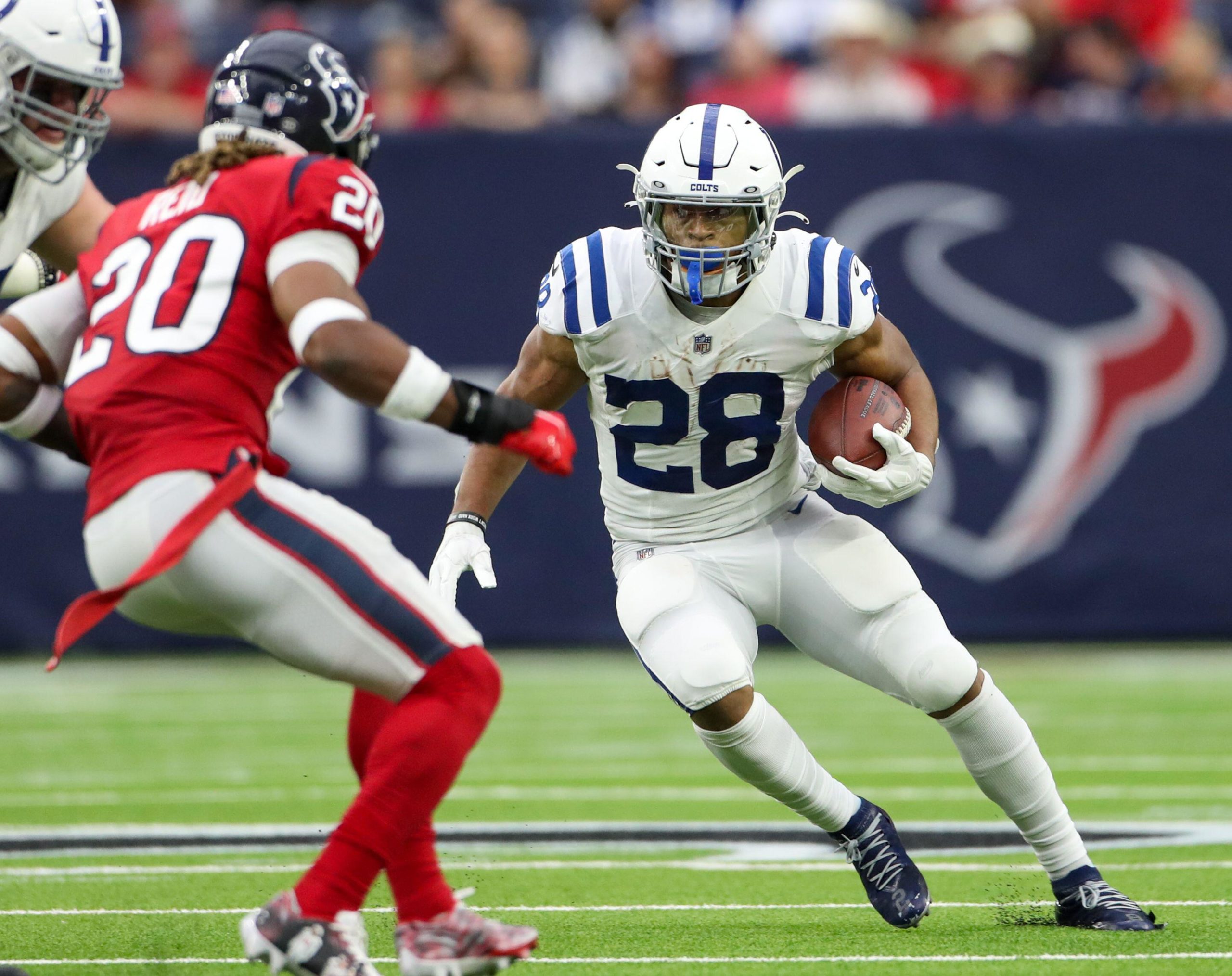Earlier this summer, I discussed the run game in an article called Three Yards and a Cloud of Dust. The title was a little tongue-in-cheek, but efficiency is generally the priority when it comes to running the football. Teams run to “stay on track” and keep the chains moving.
But, offensive teams can (and should) focus on creating explosive plays even when they are keeping it on the ground. Previously, I examined some of the characteristics of explosive passing plays, but StatsBomb data allows us to take the same approach to create a more explosive running attack.
Offensive Formation Width
While in the passing game, big gains tend to come out of formations which are either unusually narrow or especially wide, I looked at formation width the run game.
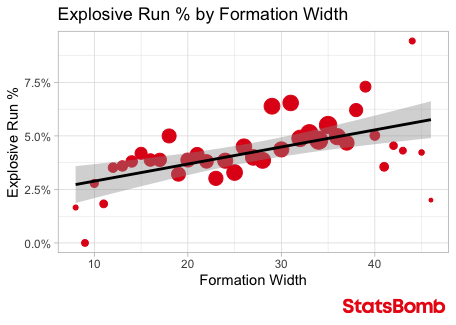
Tight formations can create problems for defenses in the passing game, this isn’t the case on the ground. In fact, the wider the formation, the more likely it is that a rushing attempt will go for a chunk of yardage. This makes intuitive sense; with more area to defend, this will open up gaps via the run game.
We saw this play out in Week 0. Utah State repeatedly rushed out of wide formation sets. Not coincidentally, they had the most explosive runs from the FBS vs FBS games this past Saturday.
Offensive Line Widths
Though the MO of the Air Raid offense is passing the ball, another staple is wide splits by the offensive line on a majority of downs. Though this is mainly to enhance pass protection, this can also enhance the effectiveness of running the football. Air Raid teams have traditionally been some of the top teams in the country in terms of explosive run percentage. They may not have high total rush yard numbers, but when they run, they generally get good yardage.
The following chart shows the explosive run percentage by offensive line width. This graph shows only widths from 5 to 8 yards (Sorry fans of the days of Texas Tech having 10 yards separating the tackles). Much like the trend across the full formation, the wider the offensive line, the higher the explosive run plays.
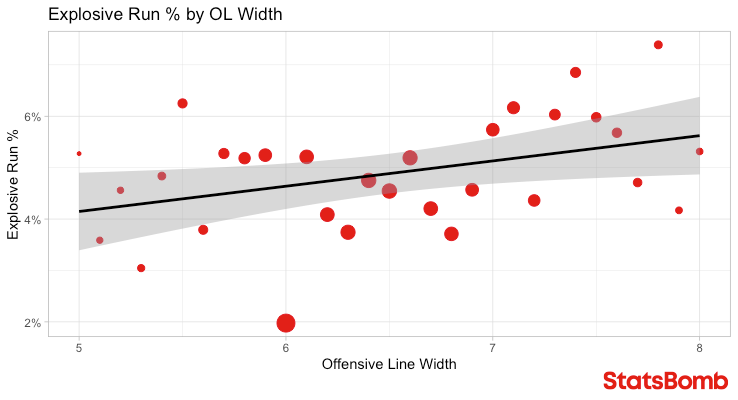
Motion
There are two schools of thought when it comes to using motion in the running game: Some posit it helps because it can confuse the defense and create gap control issues. Others view motion as a hindrance because defensive adjustments to the motion can create confusion about blocking assignments for the offense.
Both theories are plausible so I wanted to look at the numbers to help resolve the debate. The evidence suggests that the benefits of forcing defensive adjustments tend to outweigh the potential downside to an offensive line.
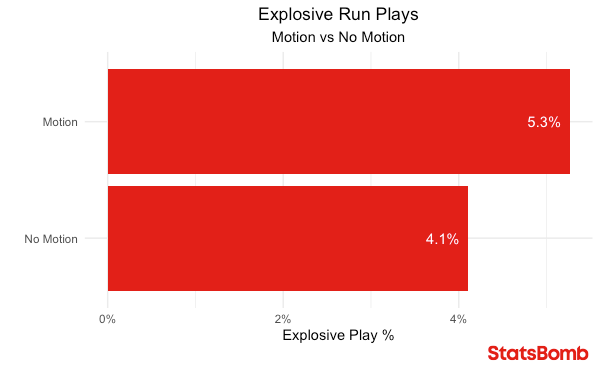
Runner
Running the ball is all about managing numbers and gaps. When the ball is handed off, the 9 offensive players not involved in the handoff have to block or otherwise account for the 11 defensive players. Meanwhile, those 11 defensive players have to fill up to 8 possible gaps between those blockers. Offensive staffs spend hours and hours game-planning and agonizing over numbers in the run game, and defensive staffs spend equal time agonizing over run fits.
Any easy way for the offense to gain an extra “number” in the run game is to use the quarterback (or wildcat player) as the runner. Now there are 10 offensive players trying to block 11 defensive players. In theory, having that extra blocker should improve the possibilities of a big gain. Our data tends to support this theory, with the caveat that QB runs are probably only called for highly skilled runners, those plays do produce more frequent explosive runs.
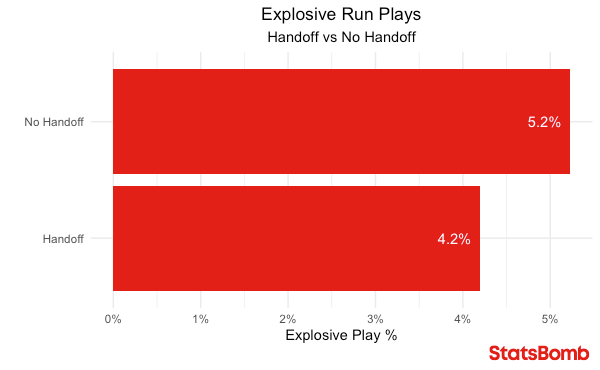
Broken Tackles
Unsurprisingly, the percentage of explosive gains goes up with each missed tackle. While the effect is not a shock, the degree of impact might be. If the runner forces 1 missed tackle, the play is three times as likely to be an explosive run. If he breaks another tackle, that doubles the chance again.
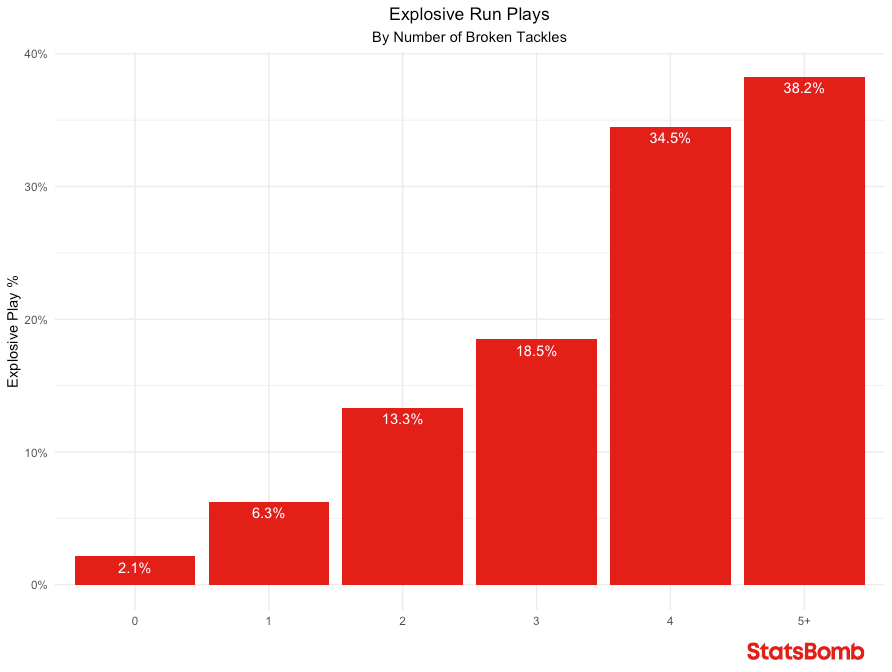
While Offensive coaches don’t have direct control over how many tackles a runner breaks (other than recruiting or signing really good players), they can do everything possible to put their runners in better positions to break tackles. For example, offenses can target specific defensive players that are prone to miss tackles, or design plays that put the ball carrier in space against players who might not tackle well, such as most cornerbacks.
Conclusion
Each of these can benefit an offense trying to plan a more explosive running attack. An offense can increase the difficulty level for the defense by lining up in wide offensive formations while also using wide offensive line splits. Utilizing motion can create communication issues for defenses, and increase your chances for explosive runs. Running the quarterback (or utilizing a direct snap) can create an extra number in the blocking. And last, but not least, create offensive running schemes that give better opportunities for your runners to break tackles.
Matthew Edwards
Head of American Football Analysis
@thecoachedwards

